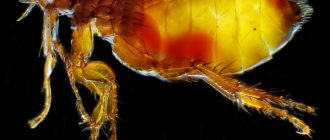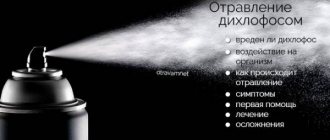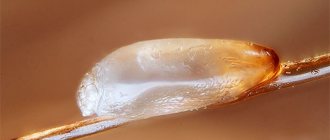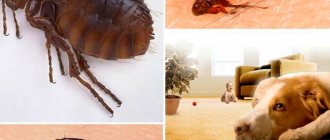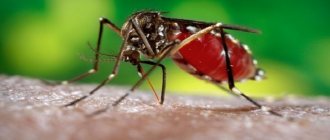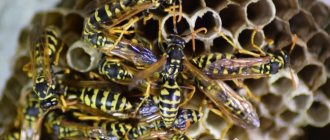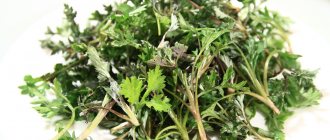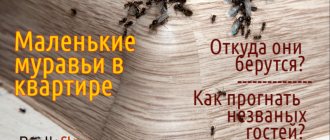Poultry farming » Chickens
0
1979
Article rating
Kira Stoletova
Lice in chickens is a problem that many breeders face, regardless of the number of flocks kept on the farm and the conditions under which they are kept. In the language of science, this problem is called mallophagosis. It is considered one of the most common diseases in the poultry industry.
Lice on chickens
To date, about 40 species of arthropods have been recorded that live on poultry. Their diet consists of feathers or down, as well as blood. The most common pest of this series is the louse. The complexity of solving the problem lies in the fact that parasites of several species can simultaneously live on one individual.
Mallophagosis is a dangerous disease, because chicken lice live on humans as well as on birds. To prevent this from happening, the fight against parasites must be carried out immediately using folk remedies and medications.
Symptoms
Timely identification of infected birds will help to quickly cure them and prevent the spread of external parasites to the entire flock. To achieve this, poultry farmers conduct preventive examinations. Chicken lice can be identified visually in good lighting.
There are 3 symptoms that require a thorough examination of your birds.
- Chickens (hen) behave restlessly, often trying to comb their feathers with their beaks.
- Birds lose weight and lay less eggs with stable or increased feed intake.
- Bare areas appear on the body, not covered by feathers.
Lice, unlike mites, do not like open areas of the body; they hide under feathers, so you need to look for them on the skin at the base of the feather. in this case, special attention should be paid to the areas under the wings near the tail. Even if you do not notice the adults, then when infected, nits - the larvae of parasites - will be visible.
Advice
It is convenient to perform the inspection if the lighting device (flashlight) is secured with a bandage on the head. This will make it possible to direct the flow of light in the desired direction and leave both hands free.
Where do lice come from, symptoms of damage
Chicken lice affect chickens at any age, but they prefer young feathers and fluff, so they appear more often in young animals, both males and broilers. The source of mallophages can be household items and other equipment. Infection occurs through all surfaces in the chicken coop and in the walking yard. Wild birds often bring lice.
Attention!
The peak of infection with mallophages occurs in spring and autumn; if it coincides with molting, the symptoms worsen. A large number of insects is observed among roosters; they pay practically no attention to feather cleaning and dust baths.
The appearance of mallophages is facilitated by close housing of chickens, insufficient care, poorly prepared or poor nutrition, and excessive dampness in the chicken coop and enclosure. Insects do not tolerate bright light; they are grouped under the wings and tail, as well as on the stomach. Often parasites adapt to the color of the chickens’ plumage, due to which they become almost invisible. The presence of parasites is determined by the following signs:
- with a large number of parasites, chickens go bald, this is especially noticeable in the back, neck and abdomen; over time, wounds, bruises, particles of keratinized, exfoliated skin, dried blood, eggs and insect feces form on bald areas of the skin. The same marks are sometimes observed on the comb and catkins;
- upon careful examination of the feathers, you can see small holes in them, eaten by insects;
- different types of lice accumulate in places that are more comfortable for themselves - around the eyes (tearfulness will appear, keratoconjunctivitis will develop), they can appear in the feather cover of the neck and head;
- when suffering from mallophagosis, due to unbearable itching, chickens change behavior, become too fussy, constantly rummage through feathers, pluck them, and a tendency to self-pecking appears;
- loose fit or partial peeling of scales on the legs;
- poor appetite and poor development;
- loss of body weight, weakening of egg production, in critical cases, chickens stop laying eggs.
If you notice strange behavior in your bird, but you doubt that it is mallophages and not mites (mange) or other skin diseases, place the chicken under a bright light for 10 minutes. Insects will be drawn to the warmth, so you can see them. It is impossible to detect down feather eaters on a dead bird; they quickly leave the cold body.
Can a person become infected with chicken lice?
Pooh-eaters and feather-eaters can get to a person and even bite him. But the human body is not a suitable environment for insects that parasitize birds. If lice even get into your hair, then simply washing your hair with shampoo can get rid of them. That is, when carrying out treatment on birds, there is no need to fear that the parasites will “move” to a new host – a person.
But it is still impossible to say that chicken lice are absolutely harmless to humans. Walking around an infected bird with exposed parts of its body can lead to multiple bites and infection with various diseases. We must not forget that blood-sucking parasites are carriers of infections. Even without becoming a “house” for parasites, you can get seriously ill.
The clothing of staff on poultry farms can become a temporary home for lice. A person thus transfers them from sick to healthy chickens. Some species can live without food for a long time, so if parasites are detected, it is necessary to treat the clothing of personnel.
How to get rid of chicken lice
In order to understand how to radically get rid of pests when chicken lice are detected, you need to take a number of points into account.
- The main thing is where and how the chickens are kept.
- If it is summer and the bird is roaming freely or is in an open pen, then the task of getting rid of parasites is simplified - we only treat the bird, and at the same time build a spacious bath with ash.
- If it’s already cold outside and the chickens are under the roof, then first we decide how to get rid of lice in the barn itself - we change the bedding, treat the floor, structural elements, perches, cages, supports and walls, and then the bird itself, otherwise all efforts will end a fiasco, and it will not be possible to completely rid the chicken coop of parasites.
The choice of a remedy for chicken lice remains with the owner of the bird - from chemical veterinary insecticides to treatment with traditional methods.
Chemical veterinary drugs
Any remedy proposed by the modern veterinary drug industry aimed at destroying chicken lice will have the desired expected effect.
- It is better to choose either ready-made aerosols or concentrates for dilution, so that you can then spray the bird, or you can take a dry mixture to powder the plumage.
- You need to work with the drug in accordance with the instructions, observing the safety points and recommendations for processing and proportions when diluting.
- Each individual is caught, picked up, the head is covered to prevent toxic substances from getting on it, and the plumage under the wings, belly, back and base of the tail are moistened with a solution or thoroughly powdered.
- If a liquid is chosen for the chickens, then the interior of the poultry house is also treated with it by spraying; there are also special preparations - for example Inkur.
- If a dry mixture is chosen for the bird, then, after removing the bedding, the floor is sprinkled with it, and the perch, cages and other surfaces can be treated with steam or washed with a disinfectant liquid.
- In accordance with the recommendation for the chosen product, after a certain period of time, mandatory re-treatment is carried out, in case some eggs survived the last time.
As practice has shown, such drugs work best against lice-eaters and lice-eaters.
- Concentrates intended for diluting the solution - Deltsid, Butox 50.
- Ready-made liquid formulations - Milben-Zerstauber and Goeth for poultry, Karbofos, Inkur and Chlorophos for poultry houses.
- Dry preparations - colloidal sulfur, dust.
Important! If you contact a veterinarian, he can give each individual an injection that kills parasites directly on the bird’s body, for example with Ivermek. But for lice eaters and fluff eaters, such measures do not work well, because these parasites are not among the bloodsuckers against which such injections have been developed. For the same reason, the effect of insecticidal drops produced for cats and dogs is low.
Traditional methods
If you have chicken lice, there are excellent options on how to get rid of them using folk remedies. But here, again, it is important not to confuse them with fleas and other external parasites, against which many remedies work, but not against lice-eaters and lice-eaters.
The reason is that the chicken louse does not leave its owner of its own free will while he is alive. Only by chance, during close contact, or when the bird itself throws the parasite off with its beak, as well as the death of the infected bird, will force the louse to climb onto a new host. Therefore, herbs that expel fleas such as wormwood, calendula or chamomile will not affect the chicken louse - it will not go away! Only poisonous mixtures will eliminate the infection by killing the parasite.
Likewise, essential oils, which are excellent at repelling more mobile louse from humans, will not give results, so it is better not to spend money on buying them.
What can you arm yourself with without resorting to purchased toxic chemicals?
- These are vinegar, kerosene and ammonia - the same means that kill lice in humans with pediculosis. Vinegar and ammonia are diluted with water 1 to 2, kerosene - with vinegar, 1 to 1, after which the plumage is moistened with the mixture.
- As for the chicken coop, the floors and structures are doused with boiling water, steam, or washed with the addition of vinegar or salt, and the bedding is replaced with fresh ones.
- Ash poured into a bathing hole as a dry bath works well against parasites; you can mix ash with sand. Once in such a mixture, parasites do not survive.
You can also sprinkle the feathers of livestock with ash crushed into powder - it will work weaker than dust at a time, but with repeated processing the result will be the same.
Folk remedies for getting rid of parasites
Chicken lice appeared long before the advent of the chemical industry, so there are many ways to combat them using folk remedies. Many still compete with insecticides today.
- Kerosene kills adult insects and partially dissolves chitin in larvae. It is used to treat infected birds and place them in a separate chicken coop (cage). The treatment is repeated after a week.
- The effects of vinegar are similar to how kerosene works. 6% table vinegar should be diluted with water in a ratio of 1 part vinegar to 1.5 parts water and treat the birds. Repeated processing is performed after 7 days.
- To repel insects, use kerosene with the addition of ammonia. The mixture is applied to the back of the chicken’s neck, drop by drop.
- Sand and ash baths for chickens serve as prevention and an additional means in the fight against parasites. As an independent treatment, this is a weak method. Although in private households with a small number of birds, careful and frequent rubbing of the sand-ash mixture into the fluff (so that the mixture reaches the skin) helps get rid of lice.
For many, the phrase “folk remedies” is associated with herbs. Indeed, our ancestors fought against parasites with the help of herbs. Wormwood, marsh rosemary, and tansy repel lice. Bunches of herbs are hung in the chicken coop and placed in the bedding. They will be effective after treating the poultry and chicken coop as a preventive measure against new infections.
How to recognize mallophagosis
The following signs help to suspect mallophagosis:
- the feather shafts are damaged at the base: characteristic holes resembling perforations are noticeable;
- chickens become restless, constantly cleaning their feathers, trying to get rid of feather eaters on the skin;
- young individuals develop worse and gain little weight;
- gradually the affected areas lose their plumage. It is the “bald back” of chickens that prompts owners to think about a parasitic infection;
- lack of treatment worsens egg production, birds lose part of their body weight.
Insecticides and veterinary drugs
Veterinary pharmacies sell special products for the treatment of mallophagosis. They act selectively - they kill insects, affecting their nervous system, but do not harm the bird and do not accumulate in its body. This method of combating parasites is the safest.
We list the drugs that have proven their effectiveness.
- Insectoacaricidal powder is produced by many manufacturers. For example, Barrier powder. The action is almost the same. 1-5 g of the drug should be sprayed onto the chicken, lightly rubbing into the feathers.
- "Beafar" and "Frontline" are insecticidal sprays. Spray on the bird in the direction against the feathers until they are wet.
- INVESA Promectin oral solution. Designed for replacement young stock and broilers. They are drunk in the morning, adding Promectin to the drinking water. Dosage – 1 mg is dissolved in ¼ of the daily water intake per 25 kg of poultry (depending on weight – from 12 to 30 chickens).
- Preparation for spraying "Butox". The solution should be prepared at the rate of 2.5 ml of the drug per 10 liters of water. If there are few birds, an ampoule - 1 ml - is diluted in 4 liters of water.
For treatment (spraying), other insecticides can be used, for example, “Stomazan”, “Neostomazan”, 2% oxamate emulsion. However, these products are more toxic to chickens; they cannot be used to treat laying hens a month before slaughter. Any treatment - with sprays, powder or liquid - must be repeated after 7-10 days in order to destroy the larvae that did not die during the first treatment. By this time, they have already turned into an adult and are completely killed during processing.
What is a chicken louse: what does it eat and how does it reproduce?
The chicken louse, or feather eater, is the most common parasite found on farm and wild poultry. Scientists have identified more than five thousand varieties of lice, of which about two and a half thousand can parasitize birds. Twenty subspecies, each of which has its own characteristics, cause enormous damage to the agriculture of our country.
The chicken louse lives on both domestic and wild birds
Some bird lice are divided into two main families - lice eaters and feather eaters, but in a practical sense, such a division is not of great importance, since the specifics of parasitism of both, as well as the methods of combating them, are identical.
In addition to chickens, lice eaters can attack domestic and wild birds such as:
- goose,
- duck,
- quail,
- turkey,
- guinea fowl.
The parasite is very specific in its choice of prey; the bird louse does not live on mammals.
What does the lice eater look like and what does it eat?
Bird lice are small insects that do not have wings, with a rounded flat or elongated segmented body up to two millimeters long. The chicken parasite is distinguished by a yellowish-brown tint and individual dark elements. The insect has a wide head and poorly developed antennae. On each of the six legs, arranged in pairs, there are claw growths, with the help of which the insect can fix its position on the body of the victim.
The chicken louse diet includes:
- fluff,
- feather,
- poultry skin particles.
These creatures do not need blood, but they will not refuse its frozen elements on the edges of wounds formed as a result of scratching.
Leaf lice feed on feathers and down of birds
Reproduction
Females produce white eggs that adhere firmly to the feather or down of the bird. The eggs reach a length of one and a half millimeters, are oval in shape and are visible to the naked eye upon careful examination. The hatching process begins on the fifth to twentieth day, depending on conditions. The larvae, although similar to adults when visually examined, must go through the molting stage three times, and only then after two to three weeks they become sexually mature parasites. The reproduction of all avian pests is characterized by the highest speed and efficiency. The female brings up to one hundred thousand eggs during her life cycle. Poultry and feather eaters cannot survive outside the bird's body; they die already on the second or third day, once in the external environment.
What products should not be used?
There are products that are effective against chicken lice, but are harmful to the bird itself. Some drugs may not harm the chicken, but accumulate in the meat. They enter the human body through meat, causing intoxication. For example, products containing chlorinated carbohydrates accumulate in both meat and poultry eggs. Therefore, there are a number of drugs prohibited for the fight against parasites:
When using approved insecticides, it is important to follow their dosage. Exceeding it also leads to the accumulation of the drug in chicken meat and eggs.
general information
Lice beetles, belonging to the order Mallophaga, are external parasites of birds. In the photo of a chicken louse presented below, the features of its structure are clearly visible: a dorsoventrally (in the dorso-abdominal direction) flattened body, a large head and mandibles (jaws) of the chewing type, located vertically, short antennae having from 3 to 5 segments.
The lice beetle ranges in size from one to more than six millimeters. The parasite spends its entire life cycle on the bird. Eggs laid by insects on feathers develop in a period of 4 to 7 days. In general, the development of an insect from egg to adult is about three to four weeks.
As a rule, bird lice feed on particles of feathers and scales of the stratum corneum of the skin.
However, the species Menacanthus stramineus can feed on blood: the parasite pierces the soft feathers near the base and gnaws through the upper layer of skin. Without a “host” the insect can live for 5-6 days.
Chicken coop treatment
If lice are found on several chickens, you need to treat not only the birds, but also the chicken coop. Before treating with insecticidal preparations, the chicken coop must be cleaned and old litter and droppings thrown away. Spray preparations that kill insects are divided into two groups. One can spray the room in the presence of birds; when treating with the drug, chickens from the second group must be removed. The second type is cheaper, but requires more labor.
- 1st group: all insecticides based on pyrmethrin, Entomozan Super, etc. Dissolve them according to the instructions. Per square meter of surface to be treated (walls, ceilings, floors) you need 0.5 liters of liquid.
- 2nd group: “Draker”, “Diazinon”, “Sevin”, “Stomazan”, “Tsifoks”. Treatment is carried out at the rate of up to half a liter of solution per square meter of surface. The solution is prepared according to the instructions, the ratio varies depending on the drug.
Smoke bombs can be used to disinfest a chicken coop. These products are produced on the basis of insecticides (“PESHKA-V” checkers). The treatment is carried out in the absence of birds. 1 checker weighing 50 g is designed for a room of 250 cubic meters.
Advice
To kill lice, you need insecticidal bombs. Sulfur ones are not suitable for these purposes. They are aimed at destroying fungi and bacterial diseases.
Prevention
Lice get on chickens either from wild birds or from new stock. If a wild bird - pigeons or sparrows - has flown into a chicken pen to feed, it is not as harmless as it seems at first glance. It is in such cases that parasite infection occurs. Therefore, it is advisable that the pen be covered with a net on top.
Pigeon nests in a barn are another danger. They need to be removed. Rats are also carriers of lice eaters. They can leave flea and lice larvae in the chicken coop. You need to make sure that there are no holes or cracks in the chicken coop. And if the barn has an earthen floor, only regular preventive treatment with insecticides will help.
The chickens themselves strive to get rid of the pests that have fallen on them. They need to provide enough free space and place a container with a mixture of sand and ash so that the birds can bathe there. You can add purified sulfur (sold at the pharmacy) there.
AfterText #1
Signs of infection
The disease caused by chicken lice is called mallophagosis : by biting and crawling over the skin, lice cause severe itching . Increased anxiety is observed in birds; the chicken spends a long time running its beak through its plumage in search of insects and often pulls them out along with its feathers. As a result, bare areas appear on the birds' bodies. Adult chickens eat poorly, begin to lose weight, and lay fewer eggs. Young chickens do not grow well. If chickens are infected, they may die without timely treatment.
